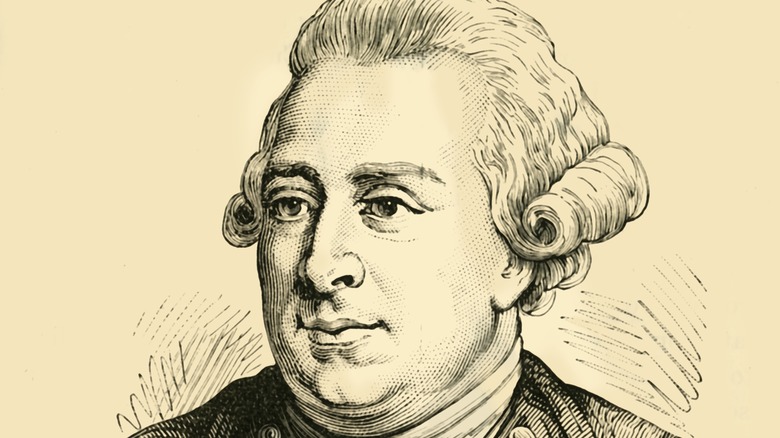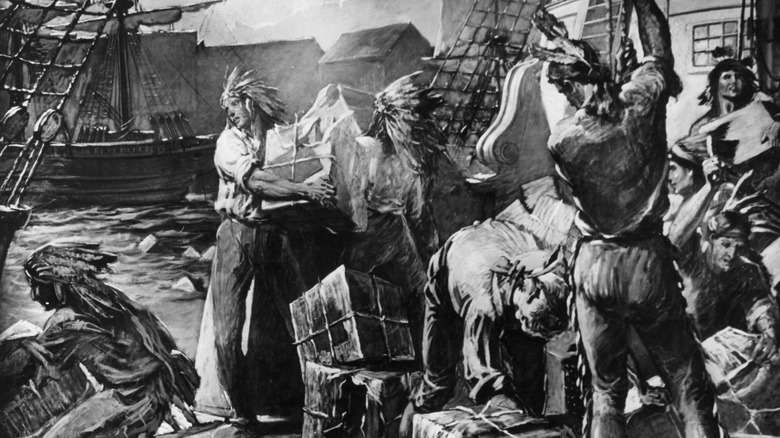What You Didn't Know About The Second Boston Tea Party
The Boston Tea Party was one of the key moments in the history of the American colonies. The raid on a vessel containing British cargo, to be unloaded on the colonists, sent a message to The Crown that at least some Americans were up to here with British interference in their laws, their commerce, and their wallets.
Unfortunately for the colonists, though King George III (above) got the message, he responded not by inviting the colonists to the negotiating table to hash things out, but by instilling even more draconian measures intended to punish and subdue the colonists.
It did not work, and the December 1773 act of vandalism and property destruction would not be the last time that Bostonians responded to British interference by dumping tea into the harbor. A second Boston Tea Party took place about four months later, itself followed by similar "tea parties" in other colonial ports.
Here is what you didn't know about the second Boston Tea Party.
The Crown tried to punish the colonists with the intolerable acts
In response to the first Boston Tea Party (depicted above), during which approximately $2 million (in today's money) worth of tea was destroyed, according to History, the British government passed four laws, called the "Intolerable Acts" or, alternately, the "Coercive Acts."
Specifically, the four acts were intended to punish Bostonians and beef up British presence and rule in the city. One act closed Boston Harbor until the British East India Company could recoup its losses from the December 1773 act of vandalism. A second, according to a companion History report, restricted Bostonians' ability to govern themselves and appointed a committee sympathetic to the Crown to govern the city. A third made British officials immune to criminal prosecution in Massachusetts, and a fourth required colonists to feed and house British troops on-demand, a process known as "quartering," and which would later be outlawed in the Third Amendment to the Constitution nearly two decades later.
Did the Acts succeed in subduing the colonists? Certainly not, as history has shown. And while it would be three years before the Continental Congress would declare independence, and 10 before that independence was formally recognized, the colonists would still continue to protest British rule in other, smaller ways. One such protest occurred, again, in Boston, in March 1774.
The second Boston Tea Party was a much lower-key affair than the first
The second Boston Tea Party took place on March 7, 1774 — just a few months after the first, according to the Boston Tea Party Historical Society. This time, according to History, colonists boarded the ship Fortune and dumped the tea into the harbor, just like their counterparts had done the previous winter.
This act of protest was considerably smaller in scale than the first. According to the Boston Tea Party Ship and Museum, the first protest involved the destruction of at least 240 chests of tea (or 342 crates of tea, according to History). By comparison, in the second protest, "only" 30 crates of tea were destroyed.
It would not be the end of colonial "tea parties," however, nor would such protests be confined to Boston. Other tea-dumping protests took place in other colonies as well. For example, according to the Boundary Stones website of WETA, residents of Annapolis, Maryland held their own "tea party," also in 1774, as did protesters in Chestertown, Maryland, according to America's Library, also in 1774. Similar protests also took place in New York and South Carolina.


